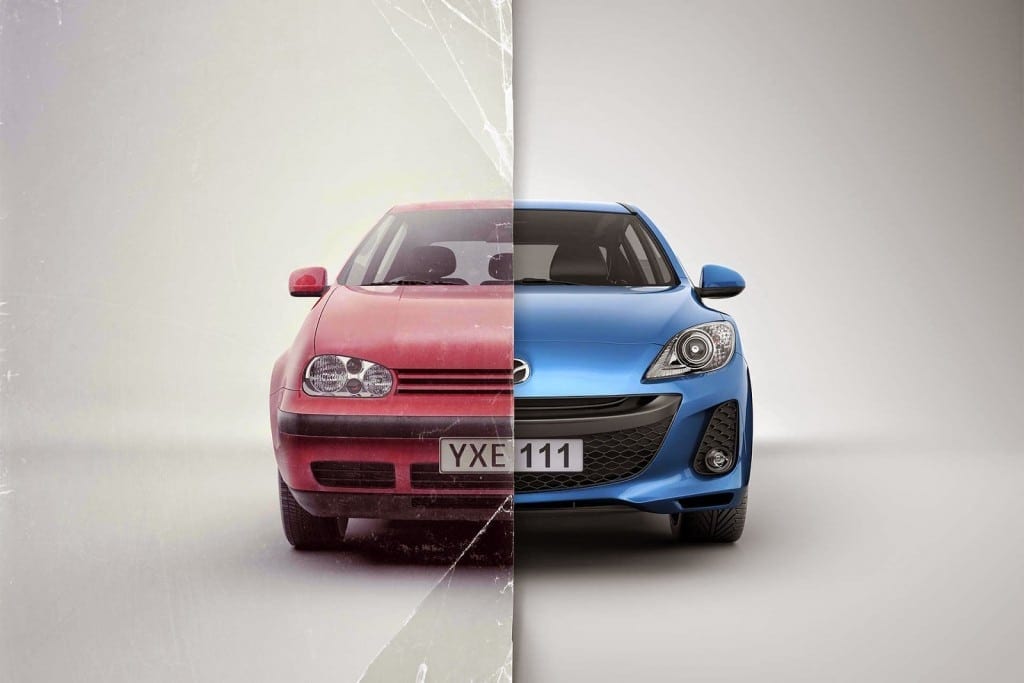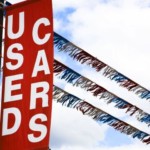With the amount of used cars being sold in 2016, it’s not surprising that car dealerships are pushing new cars harder than ever. With the price of an average new car around $34,000, it’s also not surprising to learn that consumers are getting sick and tired of buying new vehicles at ever increasing prices. If you aren’t one of them, not only should you be sick and tired of buying new cars — you should be afraid. Very afraid. Why? Because, a new car is a money-suck, and the amount of times I’ve heard people call it an investment makes me want to vomit.
After looking at the literal definition of investment, I’m going to relate that to how a new car isn’t an investment thanks to depreciation. Then, I’m going to explain how buying used helps dodge this scenario, provides better value for your dollar, and saves you some dough in the long run.
Definition of Investment
Investment is literally defined as: the action or process of investing money for profit or material result. Sure, the material result part is right. You buy the car, and said car appears in your driveway.
But, you’re forgetting about the first part — there’s no profit to be made. You actually lose money!
Therefore, It’s Not an Investment — It’s a Money-Suck
You want the true new car-buying experience? Take the average MSRP of a vehicle — currently hovering around $34,000 — and figure out what 20% would be. Then, withdraw $6,800 (20%) from the bank or ATM. Go home, place the money in a pile on the driveway, dump gas on it, light it, and weep as that money goes up in flames. Then, buy a used car for about $6,800 less than what you would have paid for that new car, and knowing that for the rest of your life, you’ll be thinking about everything else you could have done with that $6,800.
You have depreciation to thank for the suffering and horror your imaginative self just endured. Depreciation of a vehicle means it will constantly lose value over its lifetime. The 20% you burned? That’s just in the first year of ownership — for your average-priced car. Buy yourself one of those expensive luxury cars, and it will depreciate even higher than your average vehicle. It continues after the first year, and when you try and sell it back for that MSRP you originally bought it for, you’ll be shocked at how little you’re getting for a trade-in.
Is it evil? No, it’s just another way to help circulate cars through the market. But, it is an unfortunate reality that can be avoided if you be smart and shop used.
How Buying Used (Partially) Avoids This
While a vehicle is going to continue to depreciate until it ultimately becomes a goose egg ($0) on paper, there is still a way you can take the sting out of this unfortunate reality. Even getting a car that is only one year old will not only save you 20% on the total price, but also take away the hardest hitting amount of depreciation, since it does slow down progressively over the course of a vehicle’s lifetime. The older you buy, the less money the vehicle will cost, and the less value you’ll lose on it.
Honestly, the best way to avoid depreciation is to buy from a private party. If you can live without updated technology, then find yourself a good-quality car with high-miles (90,000 – 100,000) for about $2,000. Get some cheap insurance slapped on it, drive it until it dies, then repeat the process. You’ll never deal with depreciation, because you’re buying a car from late ‘90s early 2000s for the cost of a downpayment on a new car, and you’ll save money on insurance along with the interest that would rack up over time on monthly car payments.
Only do this if you know how to find a good-quality vehicle and properly maintain it. Either invest time in some serious research beforehand, or bring a trusted friend that knows plenty about cars to help you out. If not, at least buying a one-year-old vehicle from a dealership will help you avoid losing a chunk of value on your car purchase, overall.



